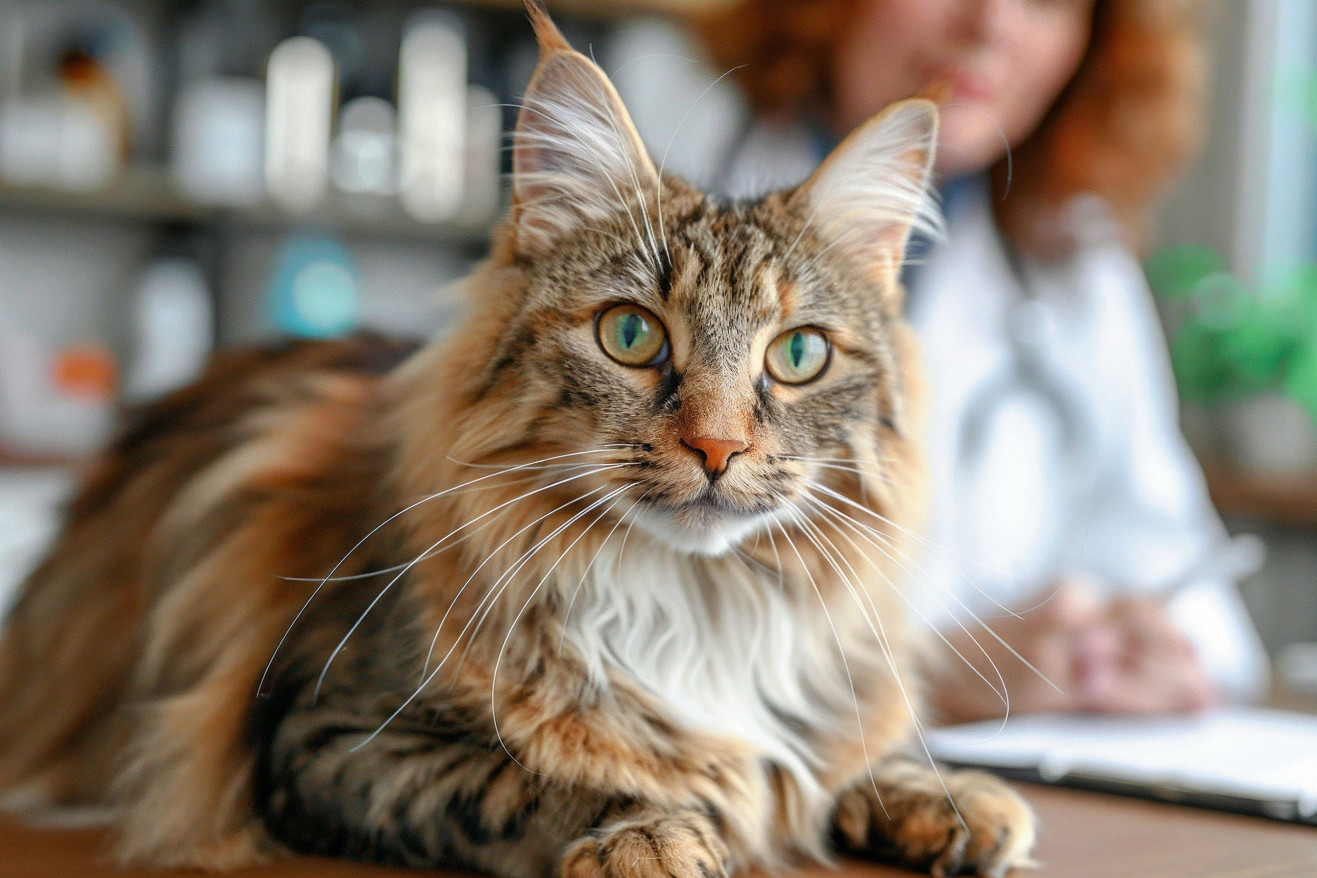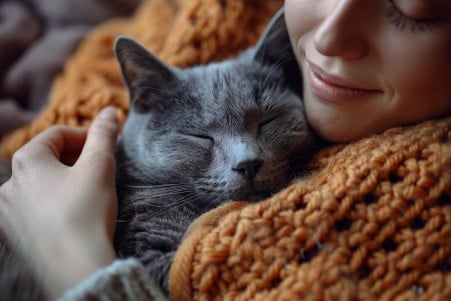Is It Ever Too Late to Spay a Cat? Veterinary Guidelines Explored
21 February 2024 • Updated 21 February 2024

Many cat owners have wondered about the best age to have their cats spayed and, as a result, if there is an age at which it’s too late to have the procedure done.
As long as a cat is healthy, there is no set age at which a cat is too old to be spayed. While veterinarians may recommend certain health tests for older cats prior to surgery, they agree that the benefits of spaying at any age outweigh the risks of cancer and infections.
In this article, we will take a closer look at this question, considering the most recent veterinary research and the most up-to-date, evidence-based reviews by veterinary professionals. By examining the physiological, behavioral, and medical factors associated with spaying at different ages, we aim to give you a comprehensive understanding of the topic. This will enable you to make the best decisions for your cat’s health based on their age and individual circumstances.
Is it ever too late to spay a cat?
Understanding the Best Age to Spay Cats
The field of veterinary medicine is always changing, and this is true of the recommendations for the best age to spay cats.
While the traditional recommendation was to spay at six months or older, new research has led to a change in this thinking.
After an extensive review, the Veterinary Task Force on Feline Sterilization now recommends that cats be spayed by five months of age. This change has been adopted by the Feline Fix by Five campaign, which has been endorsed by a number of veterinary and animal welfare organizations, including the American Veterinary Medical Association (AVMA) and the American Association of Feline Practitioners (AAFP).
A consensus document published by the task force notes that early spaying can reduce the risk of mammary carcinoma, reproductive emergencies like pyometra, and unwanted pregnancies. The benefits of early sterilization are also discussed in a piece in Today’s Veterinary Practice, which notes that the campaign can help reduce overpopulation and lower the risk of complications that can occur with later spaying.
The “Feline Fix by Five” campaign has continued to impact veterinary medicine by encouraging a proactive approach to feline care and stressing the importance of early sterilization. Veterinarians have often adopted these recommendations as part of their comprehensive wellness plans, ensuring that they are used in a way that is best for the cats they treat and that is in line with the ongoing commitment to responsible pet ownership and public education.
Age vs. Health in the Decision to Spay an Older Cat
If you are thinking about spaying an older cat, the most important factor to consider is the cat’s health, not their age. As The Dodo notes with input from Dr. Zay Satchu of Bond Vet, age should not be a reason to avoid spaying or neutering a cat as long as the animal is healthy.
Most veterinarians will recommend a full pre-surgical workup for geriatric cats, including extensive bloodwork and organ function tests, to make sure the cat is healthy enough to undergo anesthesia and surgery.
One of the most important reasons to spay an older cat is to prevent pyometra, a life-threatening uterine infection that VCA Animal Hospitals points out is a risk for unspayed female cats. Spaying completely eliminates the risk of pyometra and is especially important because pyometra and other reproductive cancers are more common in unspayed senior cats.
To overcome concerns about spaying older cats, it’s important to debunk myths about the risks of the surgery and focus on the importance of individual health assessments. When the cat’s health is taken into account and they are cared for properly during and after the surgery, spaying can be a safe and beneficial option.
This is especially true if the surgery is in line with the cat’s current health and a proactive, preventative approach to healthcare, which can lead to a smoother recovery.
Recovery Time After Spaying: Age Matters
The amount of time it takes a cat to recover from a spay surgery can vary significantly based on age, and this knowledge is important to ensure a successful recovery. For kittens, the Animal Hospital of Statesville explains that the recovery time is shorter, with most kittens recovering in 5 to 7 days and many bouncing back quickly.
Adult cats take a little longer to recover, with most requiring 1 to 1.5 weeks and needing to be kept calm and have their incisions monitored during this time.
Embrace Pet Insurance says that older cats may need more individualized care after surgery, including a recovery period that’s tailored to their age and health. This means that owners will need to make sure their cats have a quiet, comfortable place to rest, avoid high-impact activities, and be monitored closely for signs of complications, including a loss of appetite and changes in behavior.
In all cases, it’s important for pet parents to follow their vet’s aftercare instructions, which will include making sure their cat wears an E-collar and checking the incision for signs of infection. By making sure these aftercare needs are met and adjusting them based on the cat’s age, owners can help ensure a successful recovery and a return to normal activities.
How Spaying Impacts Cat Behavior
When deciding to spay a cat, it’s important to think about the short-term and long-term impacts on behavior. A study published in PMC by Eugenia Natoli found that spaying led to a significant reduction in aggressive and territorial behaviors, and an increase in affiliative interactions between cats.
This shift in behavior was especially important in unowned free-roaming cats, where the social hierarchy was maintained after spaying. The study showed that spaying, which ends estrus, can help reduce stress and aggression, leading to a calmer temperament.
The age at which a cat is spayed may also impact these changes in behavior. Michelson Found Animals notes that while spaying at any age can reduce or eliminate the desire to roam and mating-related aggression, younger cats may see these changes happen more quickly. Meanwhile, older cats, who have had more time to develop behavioral patterns, may see a slower change in behavior after being spayed.
The research shows that spaying is a positive behavioral intervention and dispels the myth that it can lead to negative psychological impacts. As we move into the physiological impacts, it’s important to note that the behavioral changes that result from spaying are largely positive. These changes can help lead to a healthier, more balanced life for spayed cats of all ages.
Hormonal Changes and Weight Gain After Spaying
Spaying results in a number of hormonal and physiological changes in cats. Ovariohysterectomy eliminates the production of hormones such as estrogen and progesterone, which can have a variety of effects on the animal.
A study cited by PubMed showed that spayed females had a significant reduction in fasting metabolic rate, which may be a factor in the weight gain that is seen after the surgery. Males, however, did not have a reduction in metabolic rate, suggesting that there may be a sex difference in the physiological response to spaying.
Today’s Veterinary Practice notes that weight gain is a common issue, especially since spayed cats have an increased appetite and decreased energy requirements. This emphasizes the importance of post-operative dietary control and possibly even weight management.
A study published in PLOS ONE and research cited by PubMed have shown that spaying reduces the long-term risks of mammary tumors and pyometra. These advantages make it important to consider spaying at any age, while also being aware of the consequences. Given these physiological changes, it’s clear that the benefits of spaying outweigh the relatively minor drawbacks, leading to better outcomes for cats.
Conclusion: When to Spay a Cat
Looking back at the information above, it’s obvious that spaying a cat has many benefits and can be done at any age. However, the overall takeaway is that you should make a health-based decision, and the cat’s health should be the most important factor when deciding whether or not to spay.
There are different things to consider at every stage of a cat’s life, from kitten to senior, and each stage comes with its own benefits and needs. It’s important to note that the Veterinary Task Force on Feline Sterilization endorses early-age spaying because of the health benefits and the role it plays in preventing overpopulation.
Meanwhile, when it comes to older cats, vets will need to do a full health workup to make sure that spaying is still a good option for improving their quality of life and preventing health problems.
As cat parents, we need to talk to our vets to get personalized information that takes our cat’s health and lifestyle into account. By making informed decisions that are based on vet recommendations and thorough research, we can make sure that we’re doing what’s best for our cats and ensuring that they live long, healthy lives.


